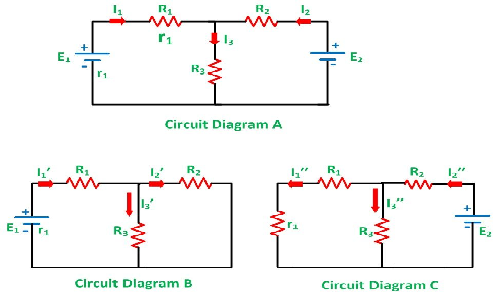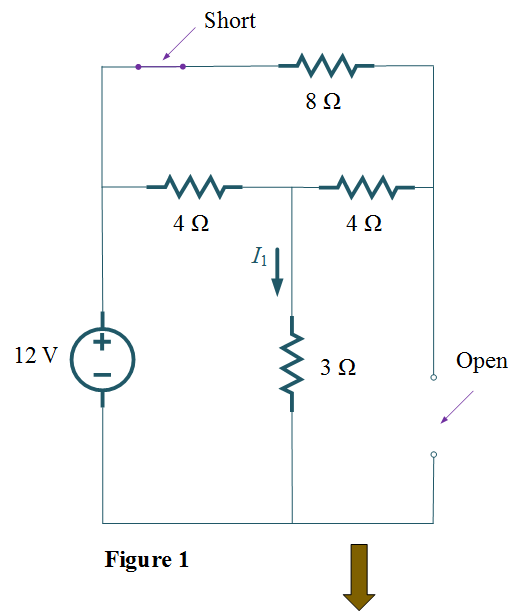
To evaluate the separate currents to be combined, replace all other voltage sources by short circuits and all other current sources by open circuits.

Superposition Theorem The total current in any part of a linear circuit equals the algebraic sum of the currents produced by each source separately. HyperPhysics***** Electricity and Magnetism The superposition theorem is a theorem that states that the voltage or current in any part of a linear circuit with multiple sources is equal to the sum of the. Ohms and amperes are the default units, but if you put in resistor values in kilohms, then the currents will be milliamperes. This voltage can be viewed as the sum of two voltages, V 1 a + V 2 a, where V 1 a becomes +50 volts at t 0 and remains there indefinitely, and V 2 a becomes 50 volts. The voltage at a starts at zero, goes to +50 volts at t 0, then returns to zero at t +0.001 second. Designing and testing the Thevenin equivalent circuit. The superposition principle (see above) is used to solve the problem. It can be changed back to a zero value if you wish to explore the effects of short circuits. Verifying experimentally the superposition principle for a circuit with two voltage sources. The superposition theorem states that in any linear network containing two or more sources, the response (current) in any element is equal to the algebraic sum. For any linear circuit, the principle of superposition states that each independent source contributes to each voltage and current present in the circuit. Note: To avoid dealing with so many short circuits, any resistor with value zero will default to 1 when a voltage is changed. The principle of superposition of forces states that a single, net, or resultant force has the same effect as the sum of the individual forces acting on an.

To apply the superposition theorem to calculate the current through resistor R 1 in the two loop circuit shown, the individual current supplied by each battery is calculated with the other battery replaced by a short circuit. Now that I’ve said the same thing in two different ways, I think an example would be the best way to truly understand it in practice.Superposition Theorem in Electric Circuits Superposition: Two Loop Problem Repeat this with all the power sources, and then sum them up to figure out what the total current will be. Superposition theorem states that in a linear bilateral network containing more than one independent source, the response in any element is the sum of the response obtained with one source acting at a time and other source being deactivated. To simplify things, you can remove all other voltage sources and replace them with a short circuit and remove all other current sources and replace them with an open circuit and solve the circuit. It’s linear - each power source linearly affects all other power sources.

The summation of all of the current produced by the power sources individually is the same as the summation of all of the current produced by the power sources together. But come back after reading the rest of the tutorial and I bet it’ll be a lot clearer. However, using the superposition theorem, in certain situations, you can simplify the circuit by turning off or “suppressing” all the independent power sources except one and solving the circuit, and doing that with all of the power sources, adding up the end result into a single outcome. The Superposition Theorem states that a circuit can be analyzed with only one source of power at a time, the corresponding component voltages and currents.

Even with KCL and KVL, as circuits get more complicated, sometimes the setup and the math can become quite complicated.


 0 kommentar(er)
0 kommentar(er)
